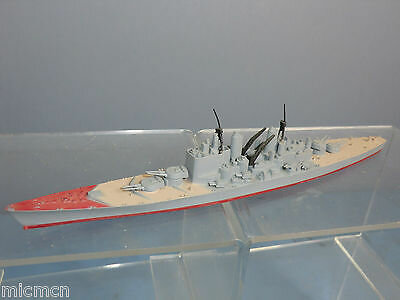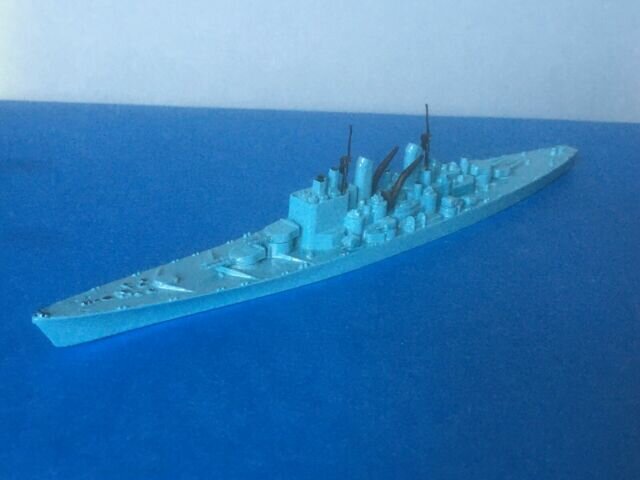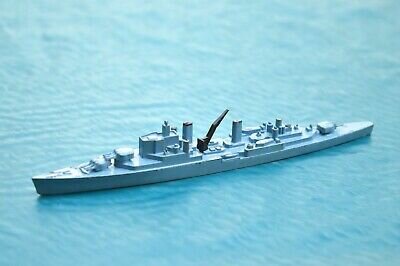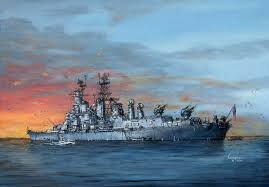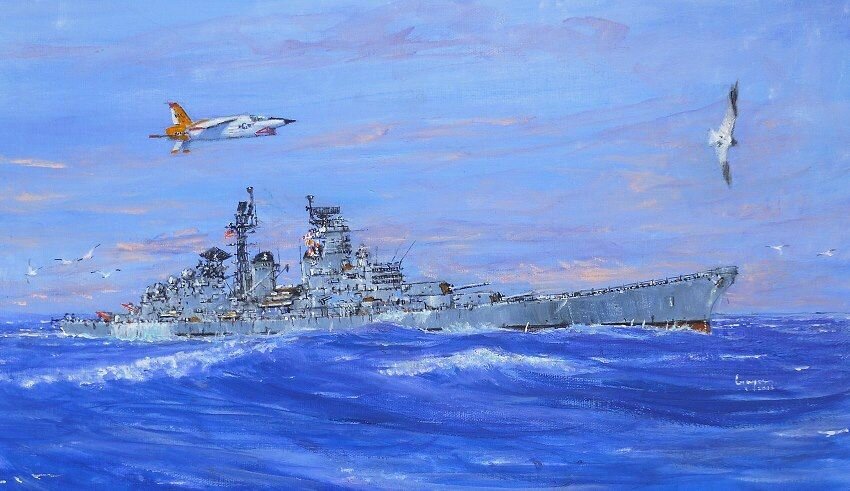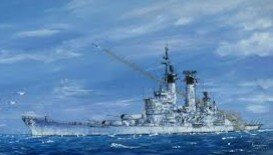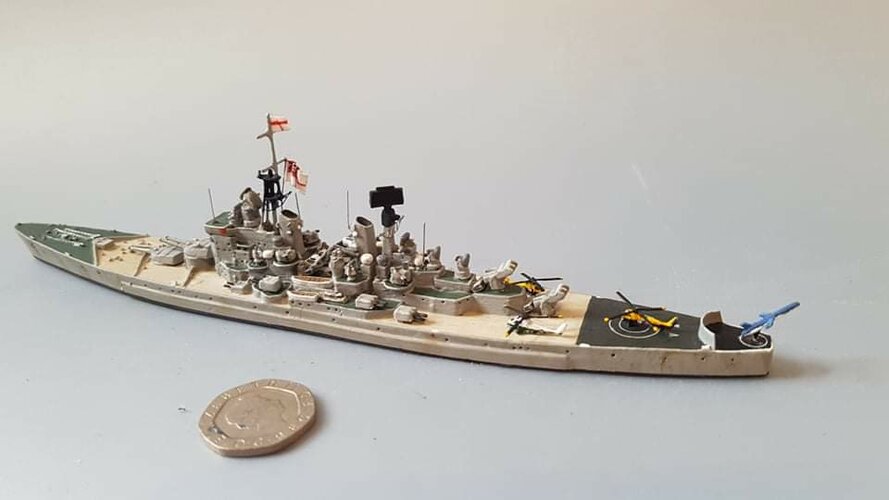- Joined
- 27 September 2006
- Messages
- 6,385
- Reaction score
- 6,752
The Triang company produced a range of waterline model ships in 1/200 scale in the early 1960s and briefly again in the 1970s.
Star of the Royal Navy models in the range was HMS Vanguard. Rather like Vanguard there were also models of the other recently scrapped big ships, the cruisers HMS Swiftsure and HMS Superb.
I can now hear gnashing of teeth from some site users. Imagine if Vanguard had not been scrapped and survived in the Royal Navy like the New Jerseys did in the USN.
What would she have looked like in 1980?
One possibility is that she could have receivec the big Seaslug launcher from Girdleness and a number of directors.
Another is that she might have received a helicopter deck aft as proposed for the New Jersey.
Most likely she would have had her light armament removed and space left for Seacats, with flag facilities activated for her NATO role.
There are plenty of old Triang models out there so let rip.
Oh and yes I know I would be the one usually pointing out the boring stuff why it couldnt happen. But as we enter a second Covid blighted Summer get out the toy box and have some fun. A couple of Talos launchers? A Blue Water launcher?
Star of the Royal Navy models in the range was HMS Vanguard. Rather like Vanguard there were also models of the other recently scrapped big ships, the cruisers HMS Swiftsure and HMS Superb.
I can now hear gnashing of teeth from some site users. Imagine if Vanguard had not been scrapped and survived in the Royal Navy like the New Jerseys did in the USN.
What would she have looked like in 1980?
One possibility is that she could have receivec the big Seaslug launcher from Girdleness and a number of directors.
Another is that she might have received a helicopter deck aft as proposed for the New Jersey.
Most likely she would have had her light armament removed and space left for Seacats, with flag facilities activated for her NATO role.
There are plenty of old Triang models out there so let rip.
Oh and yes I know I would be the one usually pointing out the boring stuff why it couldnt happen. But as we enter a second Covid blighted Summer get out the toy box and have some fun. A couple of Talos launchers? A Blue Water launcher?

